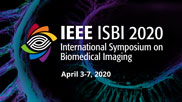Collection:

Recent advances in supervised deep learning, mainly using convolutional neural networks, enabled the fast acquisition of high-quality brain tissue segmentation from structural magnetic resonance brain images (MRI). However, the robustness of such deep learning models is limited by the existing training datasets acquired with a homogeneous MRI acquisition protocol. Moreover, current models fail to utilize commonly available relevant non-imaging information (i.e., meta-data). In this paper, the notion of a braided block is introduced as a generalization of convolutional or fully connected layers for learning from paired data (meta-data, images). For robust MRI tissue segmentation, a braided 3D U-Net architecture is implemented as a combination of such braided blocks with scanner information, MRI sequence parameters, geometrical information, and task-specific prior information used as meta-data. When applied to a large (> 16,000 scans) and highly heterogeneous (wide range of MRI protocols) dataset, our method generates highly accurate segmentation results (Dice scores > 0.9) within seconds.
- IEEE MemberUS $11.00
- Society MemberUS $0.00
- IEEE Student MemberUS $11.00
- Non-IEEE MemberUS $15.00
Videos in this product
Braided Networks for Scan-Aware MRI Brain Tissue Segmentation
Recent advances in supervised deep learning, mainly using convolutional neural networks, enabled the fast acquisition of high-quality brain tissue segmentation from structural magnetic resonance brain images (MRI). However, the robustness of such deep learning models is limited by the existing training datasets acquired with a homogeneous MRI acquisition protocol. Moreover, current models fail to utilize commonly available relevant non-imaging information (i.e., meta-data). In this paper, the notion of a braided block is introduced as a generalization of convolutional or fully connected layers for learning from paired data (meta-data, images). For robust MRI tissue segmentation, a braided 3D U-Net architecture is implemented as a combination of such braided blocks with scanner information, MRI sequence parameters, geometrical information, and task-specific prior information used as meta-data. When applied to a large (> 16,000 scans) and highly heterogeneous (wide range of MRI protocols) dataset, our method generates highly accurate segmentation results (Dice scores > 0.9) within seconds.
 Cart
Cart Create Account
Create Account Sign In
Sign In
